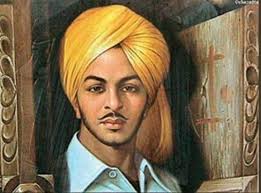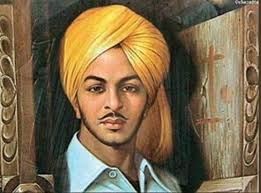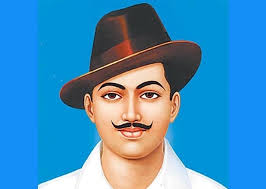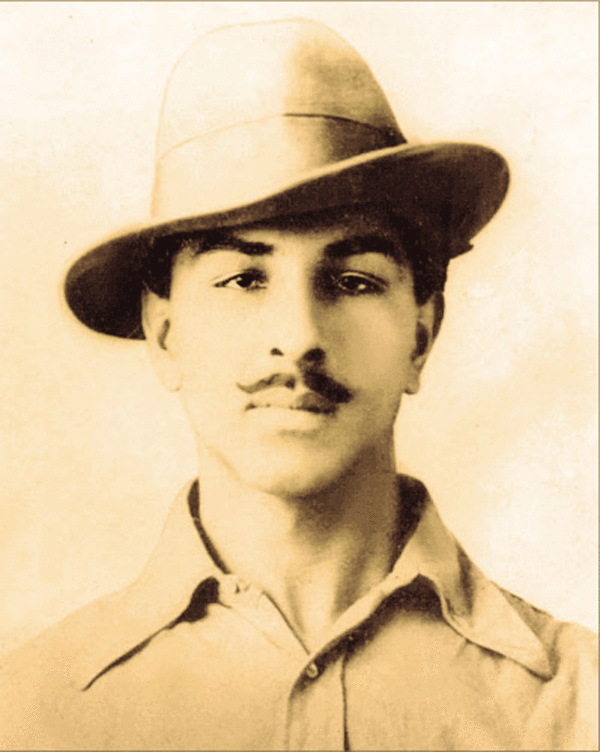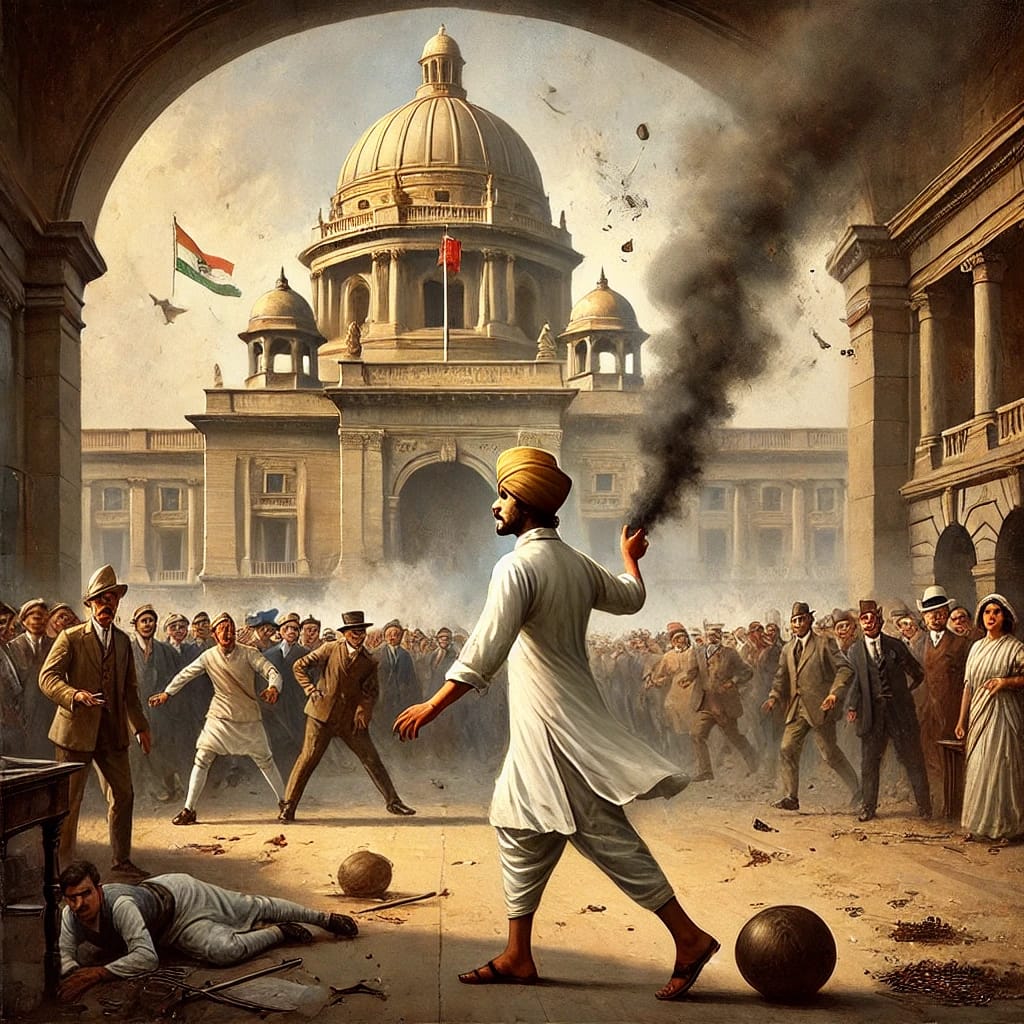
Local Police Station Bombing: A Revolutionary Act by Bhagat Singh
Introduction
The Local Police Station Bombing was one of the many acts of defiance against British rule carried out by revolutionaries in India’s struggle for independence. Bhagat Singh, along with his comrades from the Hindustan Socialist Republican Association (HSRA), participated in several direct actions to challenge the oppressive British administration. Though less documented compared to the Assembly Bombing of 1929, attacks on police stations symbolized resistance against the colonial police force, which was notorious for its brutal repression of freedom fighters.
Background: British Colonial Repression
During the 1920s, British authorities intensified their crackdowns on Indian revolutionaries. The police, acting as an arm of the colonial government, frequently arrested, tortured, and even killed those suspected of participating in revolutionary activities. The Jallianwala Bagh massacre (1919) and the Kakori Train Robbery (1925) fueled nationalist sentiments, pushing young revolutionaries toward direct confrontation with British institutions.
Bhagat Singh and his associates believed that acts of rebellion were necessary to inspire the masses and shake the foundations of British rule. One of their key targets was the colonial police force, which had become a symbol of oppression.
The Motive Behind the Bombing
The HSRA planned attacks on British administrative structures, including police stations, to:
- Retaliate against police brutality – The police routinely arrested and tortured revolutionaries.
- Create fear within the colonial administration – Demonstrating that revolutionaries could strike at the heart of British power.
- Inspire Indian youth to join the freedom struggle – A show of defiance against the powerful British regime.
Planning the Attack
The bombing of a local police station was meticulously planned to ensure maximum impact while avoiding civilian casualties. Bhagat Singh and his associates conducted detailed reconnaissance, identifying weak security points and police movement patterns. The objective was to:
- Attack during late-night hours when fewer personnel were on duty.
- Use homemade explosives to damage the infrastructure and disable operations.
- Avoid loss of innocent lives, ensuring the attack was symbolic rather than excessively destructive.
Execution of the Bombing
On the night of the attack, Bhagat Singh, along with a few HSRA members, approached the targeted police station under the cover of darkness. They carried handmade bombs, pistols for self-defense, and revolutionary pamphlets. The sequence of events unfolded as follows:
- Throwing of Explosives – The revolutionaries lobbed bombs into the station premises, aiming at offices and weapon storage rooms.
- Gunfire Exchange – Some police officers responded with gunfire, leading to a brief skirmish between the attackers and the police.
- Revolutionary Slogans – As they retreated, Bhagat Singh and his comrades shouted:
- “Inquilab Zindabad!” (Long Live the Revolution!)
- “Down with British Imperialism!”
- Escape Strategy – The revolutionaries used predetermined escape routes, dispersing into different directions to avoid capture.
Immediate Aftermath
The bombing sent shockwaves through the British administration. The police station suffered damage, and the attack exposed vulnerabilities in the colonial security system. British officials responded by:
- Increasing surveillance on HSRA members
- Arresting numerous suspected revolutionaries
- Torturing and interrogating detainees in an attempt to extract information about the perpetrators
Despite the crackdown, Bhagat Singh remained elusive and continued his revolutionary activities, gaining even more prominence.
Impact on the Freedom Movement
The Local Police Station Bombing had several long-term effects:
- Strengthened the Revolutionary Movement – It demonstrated the HSRA’s capability to strike at British institutions, inspiring more youths to join the struggle.
- Increased British Crackdown – The British introduced harsher laws to suppress revolutionary activities.
- Raised Public Awareness – The attack highlighted police brutality, turning public sentiment against the British authorities.
Bhagat Singh’s Philosophy on Violence
While Bhagat Singh initially believed in armed resistance, he later embraced socialism and revolution through ideological transformation. He argued that violence was necessary only as a tool of protest, not for personal vengeance. His later writings and court statements emphasized:
- The need for mass awakening rather than isolated attacks.
- The role of education and political awareness in achieving independence.
- A socialist vision for India free from both British rule and economic inequality.
Revolutionary Legacy
The Local Police Station Bombing was one of many actions that cemented Bhagat Singh’s status as a fearless revolutionary. Even after his execution on March 23, 1931, his legacy continued to inspire generations. His defiance of British rule remains a symbol of courage and unwavering commitment to freedom.
Conclusion
The bombing of a local police station was a crucial moment in Bhagat Singh’s revolutionary journey. It was not just an act of retaliation but a carefully planned statement against British tyranny. While the attack invited severe repression, it played a key role in strengthening the revolutionary movement in India. The legacy of Bhagat Singh and the HSRA continues to inspire struggles for justice and freedom across the world.
Reference Websites:
- Wikipedia – Bhagat Singh’s Revolutionary Activities
https://en.wikipedia.org/wiki/Bhagat_Singh - The Hindu – HSRA and Its Role in India’s Freedom Struggle
https://www.thehindu.com/ - Times of India – The Radical Movement in India
https://timesofindia.indiatimes.com/ - The Indian Express – British Repression and Indian Revolutionaries
https://indianexpress.com/ - Government of India’s Official Portal on Freedom Fighters
https://knowindia.india.gov.in/
The Local Police Station Bombing was a defining moment in India’s fight for independence, demonstrating the fearless resistance of Bhagat Singh and his comrades.

